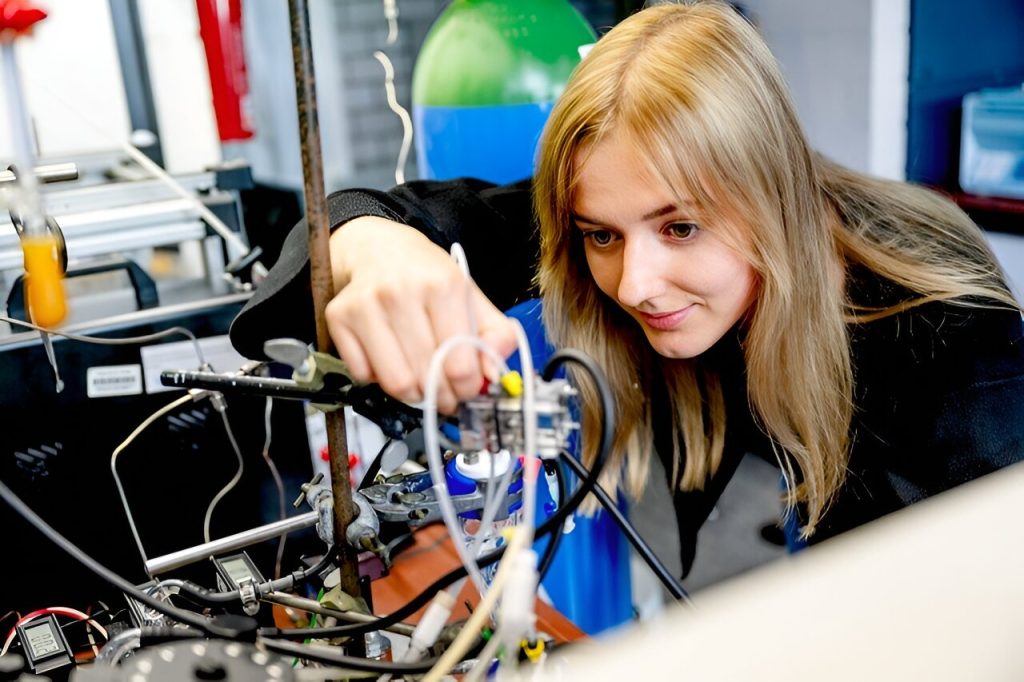“We first had to build a bridge across the thermodynamic Grand Canyon,” says Ieva Čečanavičiu …
Researchers at the Ruhr University Consortium in Germany have discovered a catalyst that can be used to convert ammonia into the energy carrier hydrogen and the fertilizer feedstock nitrite. Until now, hydrogen production and fertilizer production have been carried out in separate chemical processes.
With this new approach, a team of researchers from the Ruhr University Bochum and the University of Duisburg-Essen have demonstrated that it is possible to combine the two on a laboratory scale. The Bochum-based group led by Professor Ieva Čechanavičiute and Professor Wolfgang Schumann, together with Professor Bhawana Kumari and Professor Corina Andronescu from the University of Duisburg-Essen, report their results in the journal Nature. Applied Chemistry International Edition June 23, 2024.
Hydrogen is water (H2O to hydrogen (H2) and oxygen (O2)using Electrical EnergyFor this process to be sustainable, the energy must come from renewable sources.
“This is only possible in countries where there is enough space. Wind “In places like Namibia, there’s an abundance of sunlight that’s ideal for solar power,” Schuman explains.
Therefore, to build a hydrogen-based economy in Germany, hydrogen would have to be imported from faraway countries. The crux of the problem is that hydrogen only becomes liquid at extremely low temperatures of minus 253 degrees or at high pressure, so a huge amount of energy is needed to liquefy it for transportation.
Ammonia is easier to transport than hydrogen
Therefore, an alternative envisages converting hydrogen into ammonia on-site, as ammonia becomes liquid at minus 33 degrees Celsius and also has a higher energy density.
“A tanker full Liquid ammonia It can transport approximately 2.5 times the amount of energy contained in a full tanker. Liquid hydrogen” Schuman explains.
Finally, ammonia needs to be converted back to hydrogen when it is ready for use. This is usually done via the reverse Haber-Bosch reaction to produce ammonia (NH3) is nitrogen (N2) and hydrogen (H2), but of the two products, only hydrogen is profitable.
Double hydrogen yield
“So we had the idea to combine the reverse Haber-Bosch reaction with a second electrolysis of water to create a product that could easily be used to make fertilizer. Nitrite Or nitrates instead of nitrogen,” explains Ieva Čečanavičiute.
In this reaction, ammonia (NH3) and water (H2O) is nitrite (NO2–) and hydrogen (H2In contrast to the reverse Haber-Bosch reaction, hydrogen output is doubled and instead of unusable nitrogen, mainly nitrite is produced, which is further processed into fertilizer.
For the reaction, the team used a gas diffusion electrode to which they could supply ammonia as a gas. “This had never been done before,” explains Schumann. “Ammonia was always used in dissolved form.”
Overcoming the thermodynamic chasm
One of the challenges for the researchers was to find a suitable catalyst to make their idea a reality. This was possible using the starting material NH3 Because of the very strong nitrogen-nitrogen triple bond, it tends to be converted to nitrogen rather than nitrite.
“First we had to build a bridge across this Grand Canyon of thermodynamics,” explains Sečanavičiučiu. In previous work, the team had already experimented with multimetallic catalysts, which proved suitable for this purpose. They were able to convert 87% of the transferred electrons into nitrite. The team also managed to avoid oxygen, an unwanted by-product of water electrolysis.
“Our work shows that our Gedanken experiment can work in principle,” Schumann summarizes, “but we are still far from a technological implementation on an industrial scale.”
For more information:
Ieva A. Cechanaviciute et al. “Gas diffusion electrodes for the electrocatalytic oxidation of gaseous ammonia: Crossing the nitrogen energy chasm” Applied Chemistry International Edition (2024). DOI: 10.1002/anie.202404348
Provided by
Ruhr University Bochum
Quote: Simultaneous production of hydrogen and fertilizer (July 15, 2024) Retrieved July 16, 2024 from https://phys.org/news/2024-07-hydrogen-fertilizer.html
This document is subject to copyright. It may not be reproduced without written permission, except for fair dealing for the purposes of personal study or research. The content is provided for informational purposes only.


